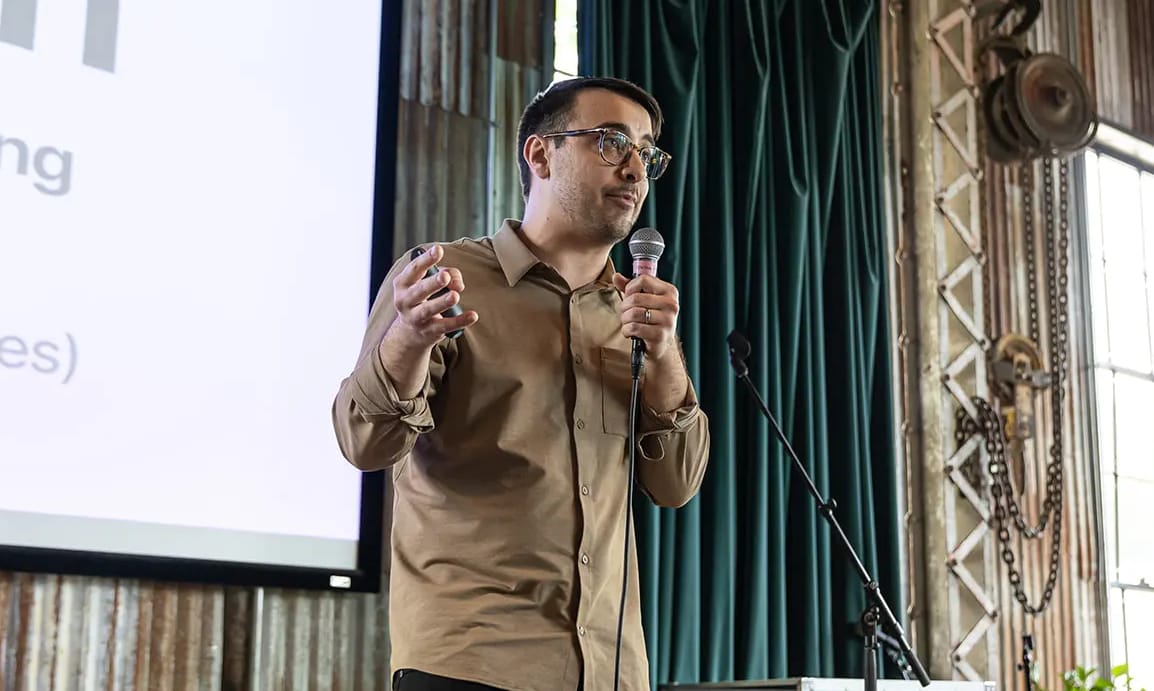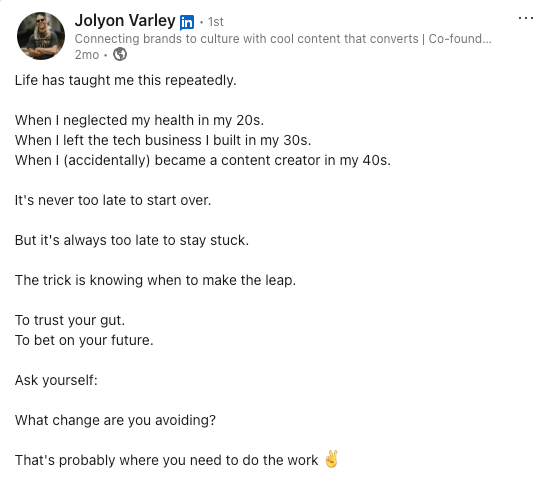- Founderoo's newsletter
- Posts
- Professor to $15B tycoon
Professor to $15B tycoon
+ nurse to mechanic with $440k revenue
Hey, it’s Guy & Farzan.
Last day at my day job tomorrow. Contract done. Then it's off to see Mum and my brothers back in the UK. Meanwhile, Farzan has exciting stuiff happening at his. Baby number three could arrive any moment. Big week for new beginnings.
Reading time: 9 mins
In the mail today. 3 founder stories, 1 bit of founder advice, 1 quote
TESTIMONIAL DONUT (Ad)
Collect testimonials and display them on your website. Too bloody easy. Try our testimonial software for free.
Founder story 1

Taikichiro Mori
From academic to empire builder: How a 55 year-old Professor became the world's richest man by rebuilding Tokyo one tower at a time.
The journey
- Born in Tokyo's Minato ward in 1904 to a rice merchant and landlord family
- Witnessed Tokyo's destruction in the 1923 Great Kanto earthquake at age 19
- Graduated from Tokyo College of Commerce in 1928 and entered academia
- Became Dean of Commerce at Yokohama City University
- Left academia at age 55 in 1959 to launch Mori Building Co.
- Built empire from two inherited plots in Toranomon to 80+ towers across Tokyo
The evolution of vision
- 1904-1928: Early exposure to real estate through family business and education
- 1945: Witnessed Tokyo's firebombing during WWII, reinforcing belief in better construction
- 1959: "Replace Tokyo's vulnerable wooden homes with earthquake-resistant towers"
- 1970s-1980s: "Create mixed-use developments that serve entire communities"
- 1986: "Build cities within cities" - exemplified by Ark Hills project
- 1990s: "Prioritize long-term stewardship over short-term speculation"
Overcoming obstacles
- Started entrepreneurial career at 55 when most prepare for retirement
- Navigated 17-year negotiation process for Ark Hills with 500+ families
- Resisted Japan's real estate bubble pressure in the late 1980s
- Maintained conservative financing while competitors chased quick profits
- Built trust through patient community engagement rather than forced displacement
- Weathered the economic bubble burst of the early 1990s through disciplined strategy
Today's Impact
- Crowned world's richest man by Forbes in 1991 with $15B fortune
- Built 80+ towers that reshaped Tokyo's skyline
- Created landmark developments including Ark Hills complex
- Established Mori Building as a multigenerational family empire
- Legacy continued through son Minoru and granddaughter Miwako Date
Growth Strategies That worked
- Patient Capital: Chose long-term value creation over quick speculation
- Community First: Rehoused displaced families in new Mori-built apartments
- Earthquake-Resistant Design: Built modern towers to replace vulnerable wooden structures
- Mixed-Use Development: Created self-contained microcities with offices, residences, and cultural spaces
- Relationship Building: Spent 17 years in community negotiations for Ark Hills
- Conservative Financing: Remained privately owned and debt-conservative during bubble years
Key Milestones
- 1904: Born into real estate family in Tokyo
- 1923: Witnessed Great Kanto Earthquake at age 19
- 1928: Graduated from Tokyo College of Commerce 1945: Experienced Tokyo firebombing during WWII
- 1959: Left academia at 55 to start Mori Building Co.
- 1986: Opened Ark Hills after 17 years of development 1991: Named world's richest man by Forbes
- 1993: Passed away, leaving lasting urban legacy
The Philosophy
"Build slow. Build well. Build for others. That's how you build forever."
"True business leadership is about lifting everyone along the way, creating value not just in profits, but in people's lives, trust, and shared destiny."
Founder story 2
This Nurse Googled how to repair Cars: Now her auto shop brings In $440K/Year
The Story:
Desiree Hill, a 39-year-old oncology nurse, was burned out from 10-hour days and 3-hour commutes that kept her from her children. She started flipping cars as a side hustle and accidentally discovered her calling when she fixed her first throttle body problem with a $60 part.
The Journey:
- 2010s: Working as oncology nurse, exhausted from long hours and Atlanta traffic commutes
- Early side hustle: Started flipping cars for extra income, teaching herself repairs via YouTube
- The breakthrough: Fixed first car issue (throttle body) with $60 part - described it as "almost like a high"
- The grind: Worked nursing shifts, then repaired cars in carport until 2-3 AM, documenting everything
- The pivot: Stopped flipping, started offering repair services - same money, less hassle
- The game changer: Loyal customer wrote her a check for brick-and-mortar shop down payment
- Today: Crown's Corner Mechanics averages 40+ cars simultaneously, booking 2 weeks out
Key Numbers:
- Started with small car-flipping investments
- One customer's loan enabled brick-and-mortar transition
- $440K annual revenue
- 40+ cars being serviced simultaneously
- 2-week booking schedule
- Full-service shop: oil changes to engine rebuilds
The Lesson:
Sometimes solving your own problem becomes your business. Hill needed reliable transportation solutions and accidentally built an auto repair empire by teaching herself one YouTube video at a time.
Founder story 3

Anthony
How an Ex-Pastor and Product Manager built a $1.3M Product Marketing Agency through LinkedIn.
The Journey
- Anthony started with dreams of teaching high school English but pivoted to church ministry when opportunities arose.
- Worked 11 years in professional ministry, including 5 years at a Chicago megachurch as a pastor leading 75+ volunteers.
- Met cofounder Robert Kaminski at a Wisconsin software development agency where Anthony transitioned to B2B sales after leaving ministry.
- Launched FletchPMM as an independent consultancy in 2023, splitting from their parent agency to focus exclusively on product marketing.
The Evolution of Vision
- 2020: Anthony launched dotChurch, a fully online Zoom-based service with 100 weekly attendees during pandemic
- 2021: Transitioned from ministry to B2B software sales at development agency
- 2022: Began posting on LinkedIn to discover market opportunities and built audience
- 2023: Launched FletchPMM as independent product marketing consultancy
- 2024: Scaled to 300+ venture-backed clients with distinct positioning methodology
- 2025: Built $1.3M annual revenue serving 13-17 companies monthly
Overcoming obstacles
- Balanced decade-long ministry career with need for career change and better compensation.
- Initially struggled with scaling challenges at parent agency's custom services model.
- Tried unsuccessful cold outbound strategies and built video content without proper distribution.
- Had to navigate splitting from parent company while maintaining client relationships.
- Learned to productise services and develop repeatable frameworks for consistent delivery.
Today's ompact
- $1.3M annual revenue
- 300+ venture-backed companies served
- 13-17 monthly clients at $7,500-$10,000 per project
- 58,741 LinkedIn followers (Anthony) + 52,144 followers (Robert)
- 11-12 million annual LinkedIn reach
- 15,000 monthly website visitors
- $50K revenue from side product (Notion content database)
Growth strategies that worked
- LinkedIn Content Flywheel: Post 3-4 times weekly with "Super-Specific How" tutorials and "Spiky Opinions" contrarian takes.
- Open Source Expertise: Give away frameworks for free, sell the implementation to build trust and demonstrate value.
- Thought Leadership: Share insights from client work to create content that speaks to similar startup challenges.
- Podcast Circuit: Leverage frameworks and viewpoints across podcasts, newsletters, webinars, and live events.
- Visual Differentiation: Developed distinct visual style and aren't shy about sharing opinions and frameworks.
Key Milestones
- Started as English major wanting to teach high school
- Worked 11 years in professional ministry across multiple churches
- Transitioned to B2B software sales role for pay increase
- Met cofounder Robert at Wisconsin development agency
- Split from parent company to launch independent consultancy
- Scaled pricing from $3K to $10K per project over time
- Built robust content flywheel generating consistent inbound leads
The Philosophy
"The goal is to provide content that is so valuable that people would pay for it."
"We have adopted an open source approach to our expertise, give away the insights/approach for free, but sell the implementation."
Founder advice from Ankar Nagpal
I sold my startup Teachable five years ago for a life changing amount
Since then, I've talked to many other founders who have gone down the same path
Here is my best advice for startup founders on how to navigate the process of selling your company:
1. Companies are bought, not sold. The best way to maximize your sale price is to genuinely not be looking to sell.
The second best way is to create a bidding situation between multiple interested parties.
2. A good enough price with the right buyer is more valuable than the best price with people you don't like
The people you sell to will determine the quality of your life post-exit more than the final sale price
3. It's you and the buyer on one team, both sets of lawyers on the other
Your lawyers are incentivized to drag the M&A process on as long as possible
Keep checking in with the buyers directly vs delegating everything to legal who tend to get caught up in pissing contests
4. Every single thing can be renegotiated in the process
How much people get paid in cash vs shares, vesting acceleration, new equity grants - it's all back on the table
Advocate hard for your team as you are the only person representing them at the negotiating table
5. Insulate your team from this process as much as possible
An M&A process is distracting as hell -- it's hard enough for you to keep your emotions in check, you don't need to manage everyone else's
Keep this on a need to know basis, ideally you and your CFO only
6. Breathe. Exercise. This is stressful, scary and exhilarating at the same time.
This will take superhuman strength but try and be as outcome independent as possible.
Negotiations are won by the party that cares the least that the deal goes through
7. Lastly, and most importantly: Until the literal day you get money in the bank, operate your business as if the deal will not happen.
A quote we loved

All done for this week.
Quick reminder - If you like our newsletter, please do “add to address book” or reply. These are “positive signals” that help our newsletter land in your inbox. If you hate it, please unsubscribe (the unsubscribe link is in the footer).
See you next week.
Guy + Farzan
Founderoo
Reply